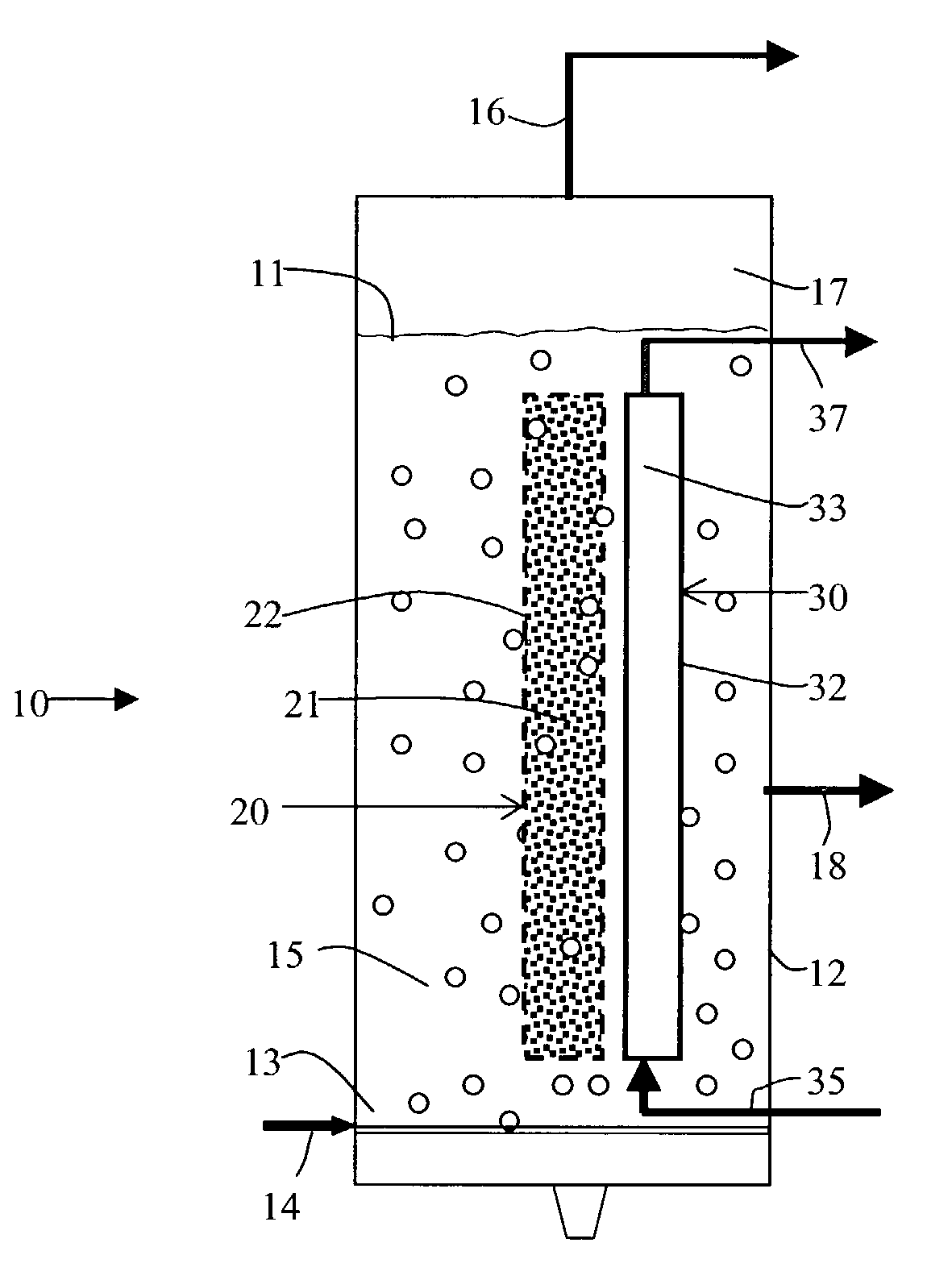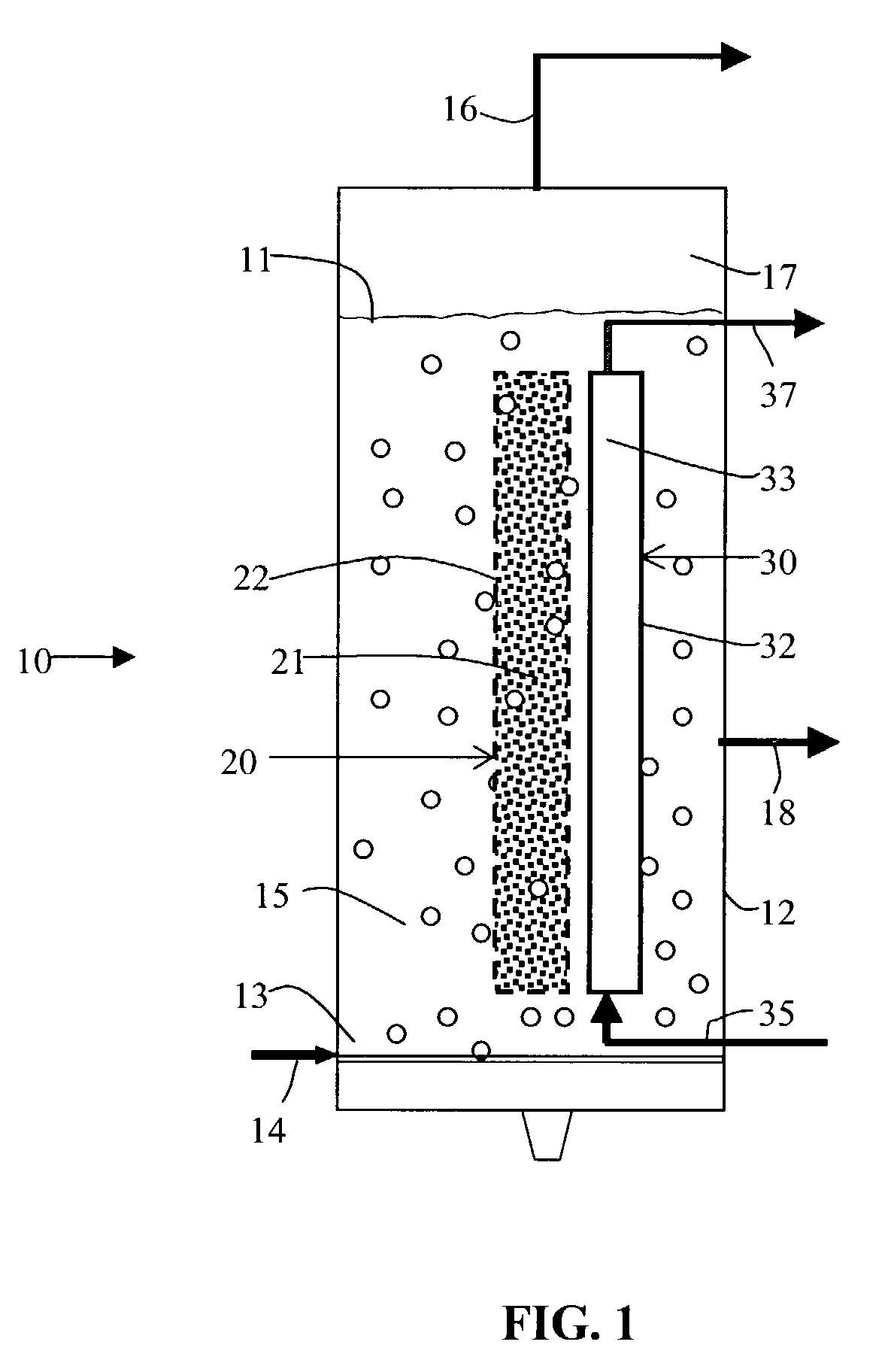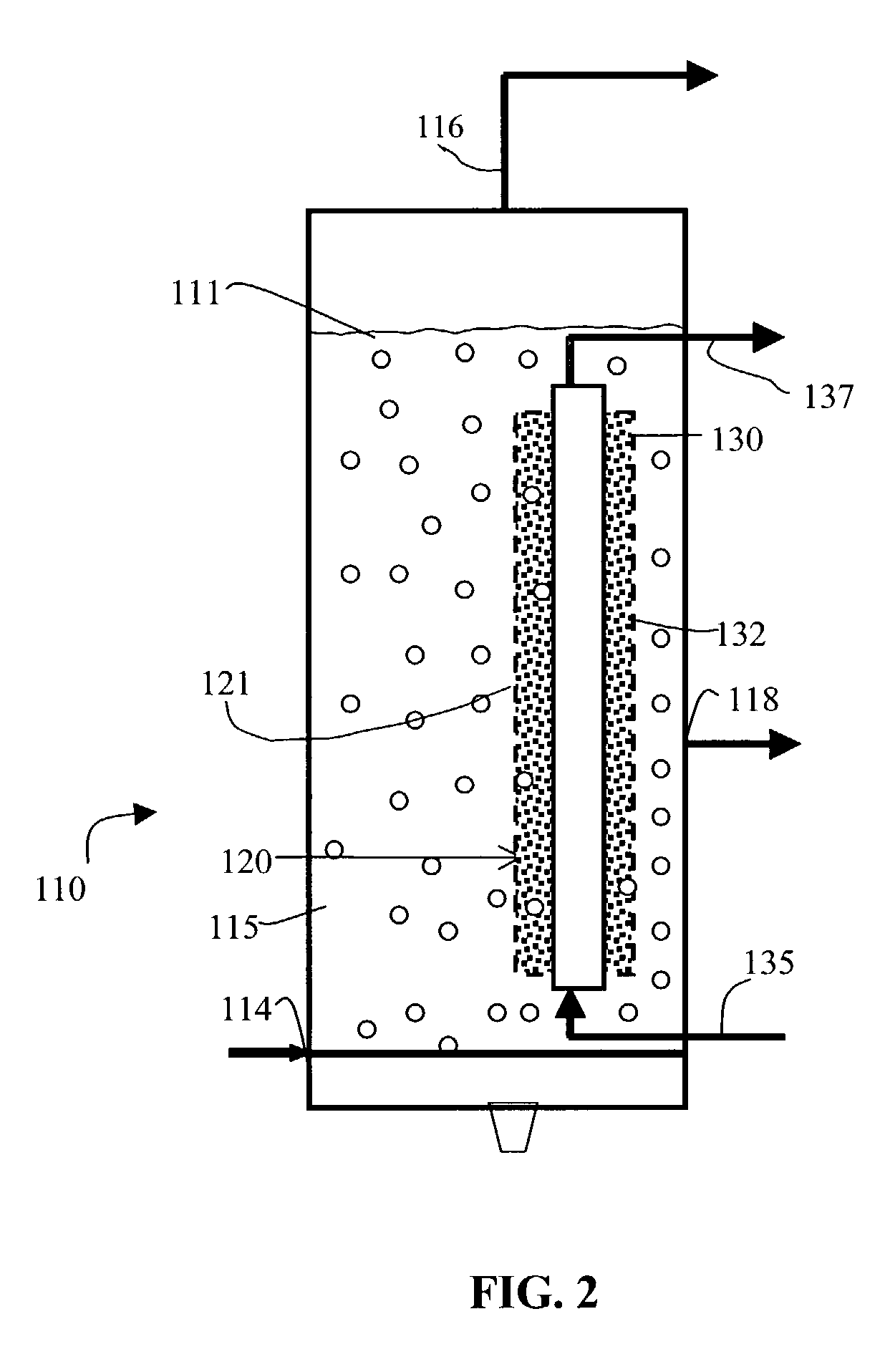Gas agitated multiphase reactor with stationary catalyst solid phase
a multi-phase reactor and catalyst technology, which is applied in the direction of machine/engine, oxygen compound purification/separation, microcapsules, etc., can solve the problems of catalyst attrition, large reaction heat, and uneconomical use, and achieve good heat transfer and thermal control capabilities, the effect of minimizing the attrition of catalys
- Summary
- Abstract
- Description
- Claims
- Application Information
AI Technical Summary
Benefits of technology
Problems solved by technology
Method used
Image
Examples
second embodiment
[0030]Referring now to FIG. 2, a second embodiment comprising a reactor 110 includes a catalyst container 120 combined with a cooling system 130. Gas and liquid phase 111 is contained in reaction chamber 115. Cooling system 130 includes a cooling tube 132 having an inlet 135 and an outlet 137. In this embodiment, cooling tube 132 is preferably positioned so that it passes through catalyst container 120. In one preferred embodiment cooling tube 132 and catalyst container 120 are concentric, with catalyst container 120 having a diameter larger than that of cooling tube 132, so that an annulus 121 is defined therebetween. In a preferred embodiment, cooling tube 132 is used to remove heat from reactor 110 by circulating and vaporizing the cooling medium, while annulus 121 contains the catalyst particles. Cooling tube 132 preferably has solid walls, while the catalyst container 120, like catalyst container 20 above, preferably has perforated walls constructed from sintered metal, woven w...
third embodiment
[0031]Referring now to FIG. 3, a third embodiment comprises a reactor 210 including a catalyst container 220 contained within a secondary housing 245. As above, catalyst container 220 is porous and contains the solid catalyst phase, while allowing gas and liquid to pass through. A chamber 247 is defined by each secondary housing 245 and contains gas and liquid phase 211. A second chamber 231 is defined between the outside of secondary housing(s) 245 and the reactor wall. In a preferred embodiment, a cooling medium circulates through chamber 231, forming a cooling system 230. The cooling medium preferably enters reactor 210 at inlet 235 and exits at outlet 237. The cooling medium can fill annulus 231 entirely, or can be further contained in one or more tubes (not shown). The feed gas stream enters chamber 247 via inlet 214 and diffuses into the gas and liquid phase 211. The gas reacts with the catalyst in catalyst container 220 to form hydrocarbons. Liquid products are withdrawn at o...
fourth embodiment
[0034]Referring now to FIG. 5, a fourth embodiment comprises a reactor 310 including a catalyst container 320 combined with a cooling system 330. As in FIG. 1, the cooling medium enters reactor 310 via inlet 335 and exits via outlet 337 and a reaction chamber 315 is defined between the outside of catalyst container 320 and the wall of reactor housing 312. As above, the gas and liquid phases occupy chamber 315. Unlike the embodiment shown in FIG. 1, a collection chamber 347 is defined directly above chamber 315 and catalyst container 320 and contains a portion of the gas and liquid phases. It should be noted that collection chamber 347 is separated from chamber 315 by a divider 327, such that fluid communication between chamber 315 and collection chamber 347 can occur only through the upper end 328 of catalyst container 320. In this embodiment, a primarily liquid stream leaves the reactor via liquid outlet 317, which is preferably positioned so as to remove liquid from collection cha...
PUM
| Property | Measurement | Unit |
|---|---|---|
| temperatures | aaaaa | aaaaa |
| temperatures | aaaaa | aaaaa |
| molar ratio | aaaaa | aaaaa |
Abstract
Description
Claims
Application Information
 Login to View More
Login to View More - R&D
- Intellectual Property
- Life Sciences
- Materials
- Tech Scout
- Unparalleled Data Quality
- Higher Quality Content
- 60% Fewer Hallucinations
Browse by: Latest US Patents, China's latest patents, Technical Efficacy Thesaurus, Application Domain, Technology Topic, Popular Technical Reports.
© 2025 PatSnap. All rights reserved.Legal|Privacy policy|Modern Slavery Act Transparency Statement|Sitemap|About US| Contact US: help@patsnap.com



